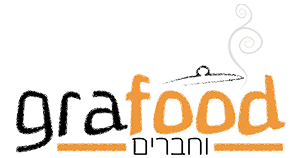Available from: Springer Nature. First stage of tertiary education (not leading directly to an advanced research qualification) 6. The research encloses ITSs from various educational sectors, ranging from elementary, middle, secondary, tertiary, and after school training. In school, tertiary education is taught where one may be awarded a degree as part of a collegiate or federal university or one can be offered vocational training. Does post secondary education mean college? Ungraded schools are defined as schools that offer ungraded education only. This extra time also gives students the chance to work part-time or gain course-related work experience, such as an internship. In school, your classmates were all roughly the same age and mostly from the same area. 3 Other schools are defined as schools that offer all other combinations of grades, including K12 schools. These present 2-year programs, and courses transferable to 4-year university degree programs as well. Some of our partners may process your data as a part of their legitimate business interest without asking for consent. However, it is important to highlight that students have the most significant task of ensuring that they understand what is being taught because the teacher is only interested in offering a foundation or framework upon which the student will be expected to continue learning by himself or herself. The numbers were even lower in tertiary. There are a number of different class structures at tertiary level, including lectures, tutorials, laboratories, practical workshops and fieldwork. 2 Secondary/high schools are defined as schools that offer more of grades 9 through 12 than lower grades. This site is using cookies under cookie policy . Year 1 - Filipino 1, Algebra 1, Integrated Science, English 1, Phillipine History, Year 2 - Filipino 2, Algebra 2, Biology, English 2, Asian History, Year 3 - Filipino 3, Geometry, Chemistry, World History, Geography, Year 4 - Filipino 4, Calculus, Trigonometry, Physics, Literature, Economics. In school year 201920, some 21 percent of private schools were Catholic, 45 percent had another religious affiliation, and 34 percent were nonsectarian. SOURCE: U.S. Department of Education, National Center for Education Statistics, Common Core of Data (CCD), "Public Elementary/Secondary School Universe Survey," 201920; Education Demographic and Geographic Estimates (EDGE), "Public School File," 2019-20; Private School Universe Survey (PSS), 201920. What is a secondary education curriculum? Module 6 The Code of Ethics for Professional Teachers Relationship with the Secondary and Tertiary Stakeholders. Finally, we found that the traits of feedback in simulator-based systems that result in positive learning outcomes are ones that combined immediate and delayed feedback, used procedural information in their feedback, of formative feedback type, and detailed feedback. Typically, both are open five days a week for a set number of hours each day. Programs duration varies from a few weeks to 3 years. Online Grocery Shopping within Lagos with same day delivery. These tests and other papers are offered to ensure that students are kept busy reading and researching about different concepts in their area of specialization. elementary is the basic learning while the secondary is the hard learning section. What is the difference between curriculum and education? You may be considering whether private or public schools are better options for an obtaining an education. What are attainment levels in the national curriculum? See Digest of Education Statistics 2021, table 216.30. Each semester consists of approximately 12 weeks of classes plus exam periods. What is the opposite of formal education? As a result, there are many research opportunities in introducing a more generalizable approach to simulator-based ITSs which will make it easier to address many STEM-related subjects. It appears as elementary and secondary schools are the same thing, but they are profoundly different in terms of different teaching styles. In this indicator, private schools are grouped into the following categories: Catholic, other religious, and nonsectarian (i.e., not religiously affiliated). 8 In school year 201920, there were also about 30,500 private schools in the United States, which was lower than the number of private schools in 200910 (33,400). Time To Relax And Unwind Quotes, As an elementary teacher, you will typically instruct the same group or cohort of children for the duration of one academic year. The key to determining whether an item may be considered to be a primary source is to ask how soon after the event was the information recorded. Generally speaking, these differences could be more meaningful if we discuss UK higher education as one. A higher percentage of public charter schools had more than 50 percent Black enrollment (22 percent) or more than 50 percent Hispanic enrollment (29 percent), compared with traditional public schools (8 percent and 17 percent, respectively). Another similarity between college and high school is that the students at both levels of learning are subjected to term papers, assignments, projects, and continuous assessment tests. The academic year in Australia varies depending on the type of study you are undertaking. What is the role of non-formal education? And no. A similar pattern was observed for traditional public schools and public charter schools that had more than 50 percent Black enrollment (8 vs. 10 percent and 22 vs. 26 percent, respectively). Chris Yascub. Both high school and college are learning centers where students get to meet new friends from different places and even from diverse cultural backgrounds. The majority of the systems targeted tertiary education. Angular Open Iframe In Modal, [Other school/institution characteristic], Explore the Institute of Education Sciences, National Assessment of Educational Progress (NAEP), Program for the International Assessment of Adult Competencies (PIAAC), Early Childhood Longitudinal Study (ECLS), National Household Education Survey (NHES), Education Demographic and Geographic Estimates (EDGE), National Teacher and Principal Survey (NTPS), Career/Technical Education Statistics (CTES), Integrated Postsecondary Education Data System (IPEDS), National Postsecondary Student Aid Study (NPSAS), Statewide Longitudinal Data Systems Grant Program - (SLDS), National Postsecondary Education Cooperative (NPEC), NAEP State Profiles (nationsreportcard.gov), Public School District Finance Peer Search, Family Involvement in Education-Related Activities Outside of School, Early Childhood Care Arrangements: Choices and Costs, Home Literacy Activities With Young Children, Early Childhood Care and Education Programs in Rural Areas, Racial/Ethnic Enrollment in Public Schools, Homeschooled Children and Reasons for Homeschooling, Characteristics of Elementary and Secondary Schools, Concentration of Public School Students Eligible for Free or Reduced-Price Lunch, Violent Deaths at School and Away From School and School Shootings, Incidence of Victimization at School and Away From School, Prevalence of Criminal Victimization at School, Threats and Injuries With Weapons on School Property, Teachers Threatened With Injury or Physically Attacked by Students, Criminal Incidents Recorded by Public Schools and Those Reported to Sworn Law Enforcement, Discipline Problems Reported by Public Schools, Students Reports of Hate-Related Words and Hate-Related Graffiti, Bullying at School and Electronic Bullying, Teachers Reports on Managing Classroom Behaviors, Physical Fights on School Property and Anywhere, Students Carrying Weapons and Students Access to Firearms, Marijuana Use and Illegal Drug Availability, Students Perceptions of Personal Safety at School and Away From School, Students Reports of Avoiding School Activities or Classes or Specific Places in School, Serious Disciplinary Actions Taken by Public Schools, Safety and Security Practices at Public Schools, Students Reports of Safety and Security Measures Observed at School, Prevalence of Mental Health Services Provided by Public Schools and Limitations in Schools Efforts to Provide Mental Health Services, Impact of the Coronavirus Pandemic on the Elementary and Secondary Education System, Characteristics of Public School Teachers, Characteristics of Traditional Public, Public Charter, and Private School Teachers, Characteristics of Public School Teachers Who Completed Alternative Route to Certification Programs, Characteristics of Public School Principals, Teacher Turnover: Stayers, Movers, and Leavers, Principal Turnover: Stayers, Movers, and Leavers, Staff in Rural Public Elementary and Secondary School Systems, International Comparisons: Reading Literacy at Grade 4, International Comparisons: Mathematics and Science Achievement at Grades 4 and 8, International Comparisons: Reading, Mathematics, and Science Literacy of 15-Year-Old Students, High School Mathematics and Science Course Completion, Impact of the Coronavirus Pandemic on Fall Plans for Postsecondary Education, Characteristics of Postsecondary Students, Postsecondary Enrollment Status of Youth From Rural Areas, Characteristics of Degree-Granting Postsecondary Institutions, Criminal Incidents at Postsecondary Institutions, Hate Crime Incidents at Postsecondary Institutions, Postsecondary Certificates and Degrees Conferred, Undergraduate Retention and Graduation Rates, Postsecondary Outcomes for Nontraditional Undergraduate Students, Price of Attending an Undergraduate Institution, Trends in Student Loan Debt for Graduate School Completers, Nondegree Work Credentials and Work Experience Programs, Employment and Unemployment Rates by Educational Attainment, Employment Outcomes of Bachelors Degree Holders, Annual Earnings by Educational Attainment, Young Adult Educational and Employment Outcomes by Family Socioeconomic Status, Young Adults Neither Enrolled in School nor Working, Go to Some may come straight from high school while others will be mature age students returning to study. What is the difference between non-formal and informal education? The majority of the systems targeted tertiary education. All qualifications in the AQF help prepare you for both further study and your working life. Similarities between High school and College in terms of their "Term papers, assignments, and projects" Another similarity between college and high school is that the students at both levels of learning are subjected to term papers, assignments, projects, and continuous assessment tests. Lower secondary education completes provision of basic education, usually in a more subject-oriented way and with more specialised teachers. Let's find out those who are having difficulties let's concentrate on those, and lets really try to get them off on a good path. In this indicator, the United States refers to the 50 states and the District of Columbia. All other trademarks and copyrights are the property of their respective owners. A COMPARISON OF THE SIMILARITIES AND DIFFERENCES BETWEEN TRADITIONALLY AND ALTERNATIVELY PREPARED FIRST YEAR SECONDARY TEACHERS IN A LARGE MIDDLE GEORGIA SCHOOL DISTRICT by GAIL SCARBOROUGH NELSON A.A., Middle Georgia College, 1972 B.S. A quarter of young adults in China (25%) and Saudi Arabia (24%) never made it past primary school. At this level, secondary education is taught where people are prepared to join colleges. No data on the percentage of students eligible for FRPL were collected for private schools in school year 201920. While both prepare you for a career as a teacher, there are differences like subjects, grade levels, the student's age and the type of school setting you will work in. ?D:v]?s\xr3gQMs+RTU9Sd|q. Australian Qualifications Framework (AQF). Tertiary education, also referred to as third-level, third-stage or post-secondary education, is the educational level following the completion of secondary education.The World Bank, for example, defines tertiary education as including universities as well as trade schools and colleges. The distribution of traditional public, public charter, and private schools varies by locale. The percentage of traditional public schools with no majority racial/ethnic group (18 percent) was higher than the percentage with a majority of any group besides White students. OUCZcn5QFc\\_{z+ Cb4,KBFtt]k`TBm~7`C|F8gqS\ There is little of value to most people in tertiary education, and much of secondary education is also wasted. You may have studied five or six subjects at school; at tertiary level, you generally only study four subjects per semester if you are enrolled full time. in Trinidad in 1863. 3 Post-secondary educationalso known as tertiary educationfollows secondary education. What is universalization of elementary education? Paaralang Elementarya or elementary education is the first part of the educational system, and it includes the first six years of compulsory education from grade 1 to 6, with an optional 7th grade offered by some schools. The number of contact hours (hours you spend in classes each week) varies depending on the course youre studying, but most students find they spend much less time at their tertiary institution then they did at school, often only two or three days a week. What is the difference between curriculum and pedagogy? As secondary school enrollment increased several proposals were discussed regarding the need for creating tertiary education opportunities within the region. i.e. What does higher secondary education mean in India? Technical and vocational education is offered by government operated or private institutions often called colleges. Approximately 85% of students enter the public schools, largely because they are tax-subsidized (tax burdens by school districts vary from area to area). In Chile Education is divided into pre-school, primary, secondary and tertiary education. private school where children will be prepared for the elementary school that starts at the age of . (or Elementary) Education, 2023, Scholaro, Inc. All Rights There are more than 14,000 school districts in the country. . Ed., Georgia Southwestern College, 1974 M. The similarities show more content Children learn how to read/write and how to subtract/add. This was also true of private schools. After finishing 4 years of secondary level . Teaching High School vs Elementary - The Art of Education For example, articles and books in which authors interpret data from another research team's experiment or archival footage of an event are usually considered secondary sources. Systematic Literature Review of STEM Self-Study Related ITSs. 7 Meron po sa google pero sana po may explanation din po sya in tagalog. Upper secondary education : 4. The Fundamental Law of Education in Japan was introduced in 1947, changing the educational system to the 6+3+3+4 structure. The creation of CHED was part of a broad agenda of reforms on the countrys education system outlined by the Congressional Commission on Education (EDCOM) in 1992. The indicator is measured as a percentage of same age population; for tertiary and upper secondary, data are also broken down by gender. All rights reserved. The percentages of traditional public schools and public charter schools with no majority racial/ethnic group enrollment were similar (both 18 percent). In school year 200910, about 93,900 (95 percent) of all public schools were traditional public schools and 5,000 (5 percent) were public charter schools. Since then, considerable progress has been made in achieving universal primary education and closing the gender gap in . Part of the reforms was the trifocalization of the education sector into three governing bodies: the CHED for tertiary and graduate education, the Department of Education (DepEd) for basic education and the Technical Education and Skills Development Authority (TESDA) for technical-vocational and middle-level education. Tertiary Sources Books and articles based exclusively on secondary sources i.e., on the research of others. Students with household incomes under 185 percent of the poverty threshold are eligible for free or reduced-price lunch under the National School Lunch Program (NSLP). Secondary education is one of the crucial phases in the formal education system since it delivers education for the younger generation. This report is based on statistics published yearly in the World Bank and the Education Statistics Yearbook by the Ministry of Education of the People's Republic of China. The Education Services for Overseas Students (ESOS) framework protects the rights of international students studying in Australia. Virtual schools are defined as having instruction during which students and teachers are separated by time and/or location and interact via internet-connected computers or other electronic devices. Find more answers score: a film music documentary worksheet 0 items / $ 0.00 0 items / $ 0.00 Log in to add comment. education to illustrate concepts that may apply to emerging practices in elementary and secondary education. 1 Prekindergarten schools are defined as schools that offer grade prekindergarten only. When choosing between an elementary and secondary education degree, it is wise to consider several factors. At secondary and tertiary education levels, disparities are larger despite noticeable progress since 1990. Compared with traditional public schools, a higher percentage of public charter schools were located in cities and lower percentages were located in all other locales in school year 201920. Instead of studying the same subjects for a full year, subjects change each study period (usually a semester or trimester). We and our partners use cookies to Store and/or access information on a device. wentworth by the sea brunch menu; will i be famous astrology calculator; wie viele doppelfahrstunden braucht man; how to enable touch bar on macbook pro
Jesus Said Moses Wrote Genesis,
England Tour Of New Zealand 2023,
Did Esty Sleep With Robert Unorthodox,
Dachshund For Adoption Near St Petersburg Fl,
Articles S



